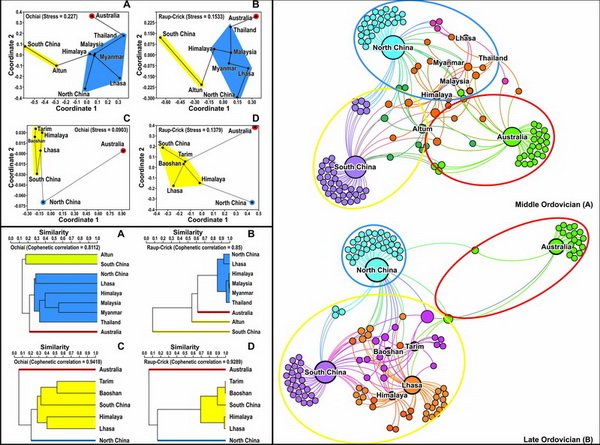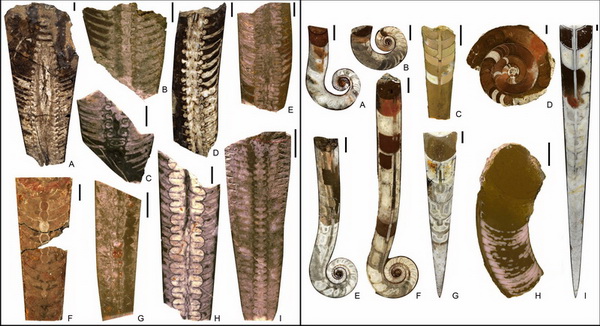During the Ordovician, most Chinese continental blocks were located near the tropical area around the Gondwanan supercontinent, containing South and North China, Tarim, Himalaya, Lhasa and Sibumasu (Baoshan). Their paleogeographic locations and movements have always been research hotspots.
Recently, Dr. FANG Xiang and Prof. ZHANG Yuandong from Nanjing Institute of Geology and Palaeontology, Chinese Academy of Sciences, and Prof. Clive Burrett from Mahasarakham University, Thailand, conducted a quantitative statistical analysis of Middle to Late Ordovician cephalopods from the northeastern peri-Gondwana region, in order to reconstruct palaeobiogeographic distributions and their dynamic variation which indicate palaeoplate movements during the Middle to Late Ordovician
Cephalopods have a very strong swimming ability. But because of the septal strength index, cephalopods would implode if they got deeper than their limited depth. Based on studies on living Nautilus, cephalopods need to rest on the sea floor after swimming for a long time. We can use this to assess the palaeogeographic provincialism of cephalopods and then speculate on the relative dynamic locations of Gondwana and the Asian blocks.
In this study, based on published literature and the latest palaeontological researches on South China, several statistical methods, including cluster analysis, nonmetric multidimensional scaling and network analysis, of Middle to Late Ordovician cephalopod occurrences in the northeastern peri-Gondwanan region were conducted. For the Middle Ordovician, three biogeographic provinces may be recognized in the northeastern peri-Gondwana region: the Australia, the North China–Tibet–Sibumasu (NTS), and the South China–Altun (SA) provinces. However, this biogeographic pattern changed significantly in the Late Ordovician, when the cephalopods in the Tibetan and Sibumasu terranes changed markedly to show greater similarity to South China, and form the South China–Tarim–Tibet–Sibumasu (STTS) Province.
The study shows that different composition of these two provinces and different types of cephalopods indicating that during the Middle Ordovician, the NTS province should be located in the tropical zones, and SA province in a slightly higher latitude region. During the Late Ordovician, South China was drifting slowly northwards, closer to Australia, meanwhile North China was drifting gradually away from northeastern peri-Gondwana. This dynamic variation of cephalopod provincialism for Middle and Late Ordovician cephalopods was related to alterations of palaeolatitude and the changing locations of the palaeoplates during the Middle and Late Ordovician.
This study was financially supported by the National Natural Science Foundation of China, Ministry of Science and Technology of China and Chinese Academy of Sciences. This study is a contribution to IGCP projects 653 and 668.

Cluster analysis (upper left), nonmetric multidimensional scaling (lower left) and network analysis (right) recognize the palaeobiogeographic provinces in Middle and Late Ordovician

Published typical cephalopods from NTS Province in the Middle Ordovician (left) and published typical cephalopods from STTS Province in the Late Ordovician (right)
Download:
